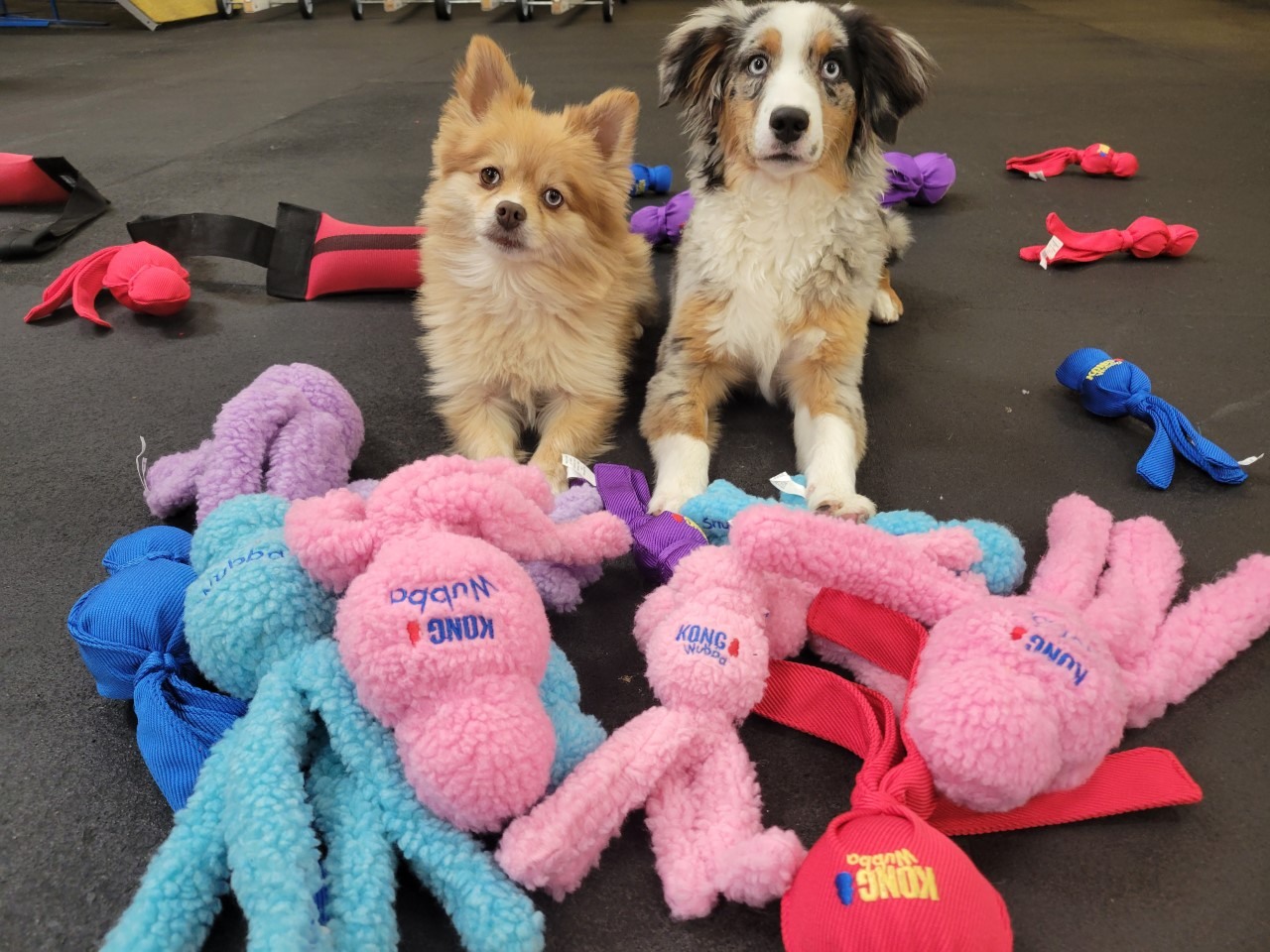Toys are a vital tool in positive reinforcement dog training.
They are not just a positive way to reward your dog, but it’s fun, too! Using play as a reward is often more bonding for most dogs than simply giving them some treats.
First, you will need to pinpoint what type of toy your dog enjoys.
There are many different types of toys to choose from. For example, your dog may prefer tug toys over a tennis ball, or vice versa. Also, for puppies who are teething or older dogs who do not have the same desire for toys as when they were young, many toys can hold treats to make the toy more exciting.
Be sure to choose a toy that excites them to give them the biggest reward. Don’t be afraid to switch things up and try different types of toys if your dog loses interest! Once you have established what kind of toy your dog finds the most fun, you’re ready!
Using toys and play as a reward has many benefits.
One of the benefits of using toys as a reward is that it will help build a high training drive. Dog breeds like Australian Shepherds and Border Collies tend to have a naturally high training drive. Using toys and play as a reward for dogs with a naturally lower training drive can significantly increase their motivation to train!
Toys are essential because they raise your dog’s energy level, resembling real-life distractions.
When you use toys as a positive reward, your dog’s satisfaction level can increase during training sessions. As a result, they will be calmer and more restful.
Keep in mind that you may get in fewer repetitions when using toys for a reward as the dog may fatigue or lose interest—plan for this in your training sessions.
When using a toy as a reward, only use the toy for behaviors that are already on cue. It can be challenging to shape new behaviors with a toy if you do not have a tug or fetch release pattern developed yet.
When you start using toys as a reward, their behaviors may break down a bit due to the excitement. However, you will be able to build your behaviors back to fluency with practice.
It is important to keep your training toys out of sight after training. By doing this, you will help to keep up their excitement for their training toy.
To keep their training toys exciting, keep them out of sight and in a separate toy bin when your training session is done.

